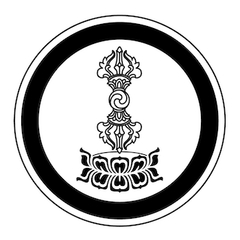Translations by Rigpa Translations
English (164)
Rigpa Translations is the translation team associated with Rigpa, an international network of Tibetan Buddhist centres and groups.
Texts translated into English by Rigpa Translations
Alak Zenkar Rinpoche
Apang Tertön
Āryaśūra
Atiśa Dīpaṃkara
Bengar Jampal Zangpo
Buddha
Chatral Rinpoche
arranged by Chatral Rinpoche
Chögyal Pakpa Lodrö Gyaltsen
Dilgo Khyentse Rinpoche
Do Khyentse Yeshe Dorje
Drimé Ösal Lingpa
Dudjom Lingpa
Dudjom Rinpoche
Dzongsar Khyentse Rinpoche
Fifth Dalai Lama
Fifth Dzogchen Rinpoche
Fifth Shamarpa
Fourteenth Dalai Lama
Geshe Langri Thangpa
Guru Chökyi Wangchuk
Jamgön Kongtrul Lodrö Thaye
Jamyang Khyentse Chökyi Lodrö
Jamyang Khyentse Wangpo
Jetsün Drakpa Gyaltsen
Jigme Lingpa
by
Jigme Lingpa
by
Jigme Lingpa
by
Jigme Lingpa
by
Jigme Lingpa
by
Jigme Lingpa
by
Jigme Lingpa
by
Jigme Lingpa
by
Jigme Lingpa
revealed by Jigme Lingpa
by
Jigme Lingpa
by
Jigme Lingpa
by
Jigme Lingpa
Kachöpa
Karma Chakme
Khangsar Tenpé Wangchuk
Khenchen Jigme Phuntsok
Khenchen Ngawang Palzang
Lama Rigdzin Nyima
Lhatsün Namkha Jigme
revealed by Lhatsün Namkha Jigme
revealed by Lhatsün Namkha Jigme
by Lhatsün Namkha Jigme, arranged by Dudjom Rinpoche
Lhodrak Namkha Gyaltsen
Minling Chung Rinpoche
Mipham Rinpoche
Nāgārjuna
Nubchen Sangye Yeshe
Nubpa Rigdzin Drak
Nyangral Nyima Özer
Nyoshul Khenpo Jamyang Dorje
Orgyen Tobgyal Rinpoche
Patrul Rinpoche
Pema Lingpa
Ratna Lingpa
Rigdzin Nyima Drakpa
Sachen Kunga Nyingpo
spoken by Mañjuśrī to Sachen Kunga Nyingpo
Sakya Paṇḍita Kunga Gyaltsen
Sakya Trichen
Śākyaśrībhadra
Shakya Shri
by
Shakya Shri
